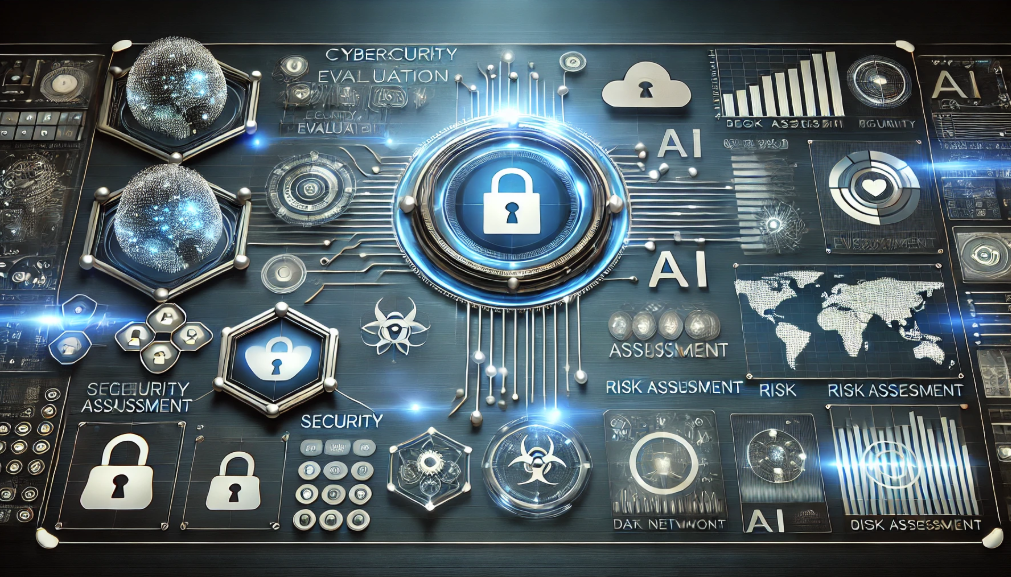The cybersecurity landscape is becoming increasingly complex, with evolving threats, emerging technologies, and heightened regulatory scrutiny. As businesses face the challenge of protecting sensitive data while maintaining operational efficiency, here are the top seven challenges to watch in 2025, along with strategies to bolster security.
1. Leveraging CyberRiskEvaluator.com for Security Posture Assessment
In an age where cyber threats are growing in complexity, understanding and evaluating your organization’s security posture is critical. Tools like CyberRiskEvaluator.com provide a comprehensive way to assess vulnerabilities and recommend actionable strategies to strengthen defenses. This platform enables organizations to:
- Conduct detailed risk assessments.
- Benchmark cybersecurity practices against industry standards.
- Identify gaps in compliance and operational risks.
Using such tools, companies can proactively fortify their security frameworks, making them more resilient against emerging threats.
2. The Weaponization of AI
AI is increasingly being weaponized by attackers to execute highly sophisticated cyberattacks. From AI-generated phishing campaigns to deepfake impersonations, malicious actors leverage this technology to evade traditional defenses. For example, AI-powered malware can adapt in real-time, making it harder to detect.
How to Respond:
Organizations should adopt AI-enhanced security solutions capable of detecting and neutralizing AI-driven threats. These solutions can identify subtle anomalies and reduce response times to potential breaches.
3. Rise in Zero-Day Vulnerabilities
Zero-day vulnerabilities remain a significant concern, as attackers exploit flaws before they are publicly disclosed or patched. These attacks can have devastating consequences, especially when targeting critical infrastructure or large enterprises.
How to Respond:
- Employ advanced behavioral detection systems to identify exploit attempts.
- Share threat intelligence across industries to stay ahead of potential vulnerabilities.
- Implement agile patch management to quickly address newly discovered flaws.
4. AI as a Cybersecurity Backbone
While attackers use AI, defenders can also harness its power to bolster cybersecurity. AI systems excel at analyzing massive datasets, detecting anomalies, and predicting potential threats.
How to Respond:
- Integrate AI-driven solutions for threat detection and incident response.
- Use AI to automate routine tasks, allowing human teams to focus on strategic issues.
- Leverage machine learning to continually adapt to new threat patterns.
5. Balancing Data Privacy and Security Compliance
Regulations like GDPR, CCPA, and the upcoming EU AI Act place increasing emphasis on data privacy. Companies must ensure compliance while protecting user data from misuse.
How to Respond:
- Adopt decentralized security models such as blockchain for enhanced transparency.
- Implement zero-trust architectures to control access based on user behavior.
- Regularly audit and update privacy practices to align with evolving regulations.
6. Strengthening Supply Chain Security
Supply chain attacks, where attackers exploit vulnerabilities in third-party vendors, are on the rise. These attacks often bypass traditional defenses and can have widespread consequences.
How to Respond:
- Invest in AI-driven solutions to monitor and vet third-party vendors.
- Ensure suppliers follow strict security protocols and include security terms in SLAs.
- Conduct regular audits to identify and mitigate risks in the supply chain.
7. Enhancing User Verification Without Compromising Experience
Sophisticated bots and stricter privacy controls have made user verification more challenging. Traditional methods often frustrate legitimate users while still failing to block advanced bots.
How to Respond:
- Use context-aware access management systems that analyze user behavior in real-time.
- Deploy AI-driven identity verification solutions to differentiate between legitimate users and malicious actors.
- Focus on minimizing user friction while maintaining robust security.
Conclusion
As the cybersecurity landscape continues to evolve, organizations must adopt proactive strategies and innovative tools to stay ahead. Platforms like CyberRiskEvaluator.com provide essential insights to assess and enhance security posture. By leveraging AI, strengthening regulatory compliance, and addressing supply chain vulnerabilities, businesses can build a resilient defense against the challenges of 2025.

